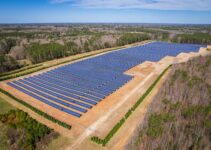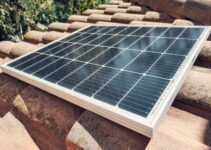When it comes to harnessing solar energy, understanding how solar panels are rated is crucial. Solar panel ratings determine the efficiency and output of the panels, allowing users to make informed decisions about their solar energy systems.
Understanding the Solar Energy Rating System
The solar energy rating system provides a standardized way to measure and compare the efficiency of solar panels. The rating is based on several factors, including the panel’s power output, efficiency, and temperature coefficient.
Power Output: The power output of a solar panel refers to the amount of electricity it can produce under standard test conditions. This is typically measured in watts (W) and helps determine the panel’s overall performance.
Efficiency: Solar panel efficiency is the ratio of the panel’s power output to the amount of sunlight it receives. Higher efficiency panels can convert more sunlight into electricity, making them more efficient in generating power.
Temperature Coefficient: The temperature coefficient measures how the panel’s efficiency is affected by temperature changes. A lower temperature coefficient means the panel’s performance is less affected by heat, making it more efficient in hot climates.
The Impact of Panel Efficiency on Solar Energy Output
Panel efficiency plays a crucial role in determining the overall energy output of a solar system. Higher efficiency panels can generate more electricity from the same amount of sunlight, resulting in greater energy production and cost savings.
For example, a solar panel with an efficiency of 20% can generate twice as much electricity as a panel with 10% efficiency, assuming all other factors remain constant. This means that installing higher efficiency panels can result in a smaller solar array and potentially lower installation costs.
Additionally, higher efficiency panels are especially beneficial for homes or businesses with limited roof space. By generating more electricity from a smaller area, these panels allow for greater energy production in confined spaces.
Factors Influencing Solar Panel Ratings
Several factors can influence the ratings of solar panels, including:
- Sunlight Intensity: The intensity of sunlight affects the power output of solar panels. Regions with higher sunlight intensity generally produce more electricity from solar panels.
- Temperature: Solar panels perform better in cooler temperatures. Higher temperatures can reduce the panel’s efficiency and overall energy output.
- Shading: Shading from trees, buildings, or other objects can significantly impact the performance of solar panels. It is important to consider shading when installing solar panels to maximize energy production.
- Panel Orientation: The orientation of solar panels affects their exposure to sunlight. Panels facing south usually receive the most sunlight throughout the day, resulting in higher energy production.
- Panel Tilt: The tilt angle of solar panels also affects their exposure to sunlight. Adjusting the tilt angle based on the latitude of the installation site can optimize energy production.
- Dirt and Dust: Accumulated dirt and dust on solar panels can reduce their efficiency by blocking sunlight. Regular cleaning and maintenance can help maximize energy production.
Comparing Different Solar Panel Ratings
Comparing solar panel ratings is essential when selecting the right panels for your energy needs. Here are some key factors to consider:
- Power Output: Compare the power output of different panels to determine their energy generation capabilities. Higher power output panels produce more electricity.
- Efficiency: Higher efficiency panels can generate more electricity from the same amount of sunlight, resulting in greater energy production.
- Warranty: Check the warranty offered by different panel manufacturers. A longer warranty period indicates the manufacturer’s confidence in the panel’s performance and durability.
- Price: Consider the cost of the panels and the overall return on investment. It’s important to balance the initial investment with the long-term energy savings.
Decoding the Technical Jargon: What Do Solar Panel Ratings Mean?
Understanding the technical jargon associated with solar panel ratings can help you make informed decisions. Here are some common terms:
- STC (Standard Test Conditions): The rating of solar panels under standard test conditions, including a constant temperature, fixed light intensity, and other standardized factors.
- PTC (PVUSA Test Conditions): An alternative rating system that accounts for real-world conditions such as temperature and sunlight intensity variations.
- NOCT (Nominal Operating Cell Temperature): The temperature at which solar panels operate under normal conditions, typically around 45 degrees Celsius.
- AM (Air Mass): A measure of the path length that sunlight travels through the Earth’s atmosphere. AM 1.5 is the standard condition used for solar panel ratings.
Choosing the Right Solar Panel Rating for Your Energy Needs
Choosing the right solar panel rating depends on several factors, including your energy consumption, available roof space, and budget.
If you have high energy consumption, opt for higher efficiency panels to maximize energy production. If roof space is limited, consider installing higher efficiency panels to generate more electricity from a smaller area.
It’s also important to consider your budget and the return on investment. While higher efficiency panels may have a higher upfront cost, they can result in greater long-term energy savings.
Frequently Asked Questions about How Solar Panels Are Rated (Explained)
Q: What is the solar energy rating system?
A: The solar energy rating system provides a standardized way to measure and compare the efficiency of solar panels based on power output, efficiency, and temperature coefficient.
Q: How does panel efficiency impact energy output?
A: Higher efficiency panels can generate more electricity from the same amount of sunlight, resulting in greater energy production and cost savings.
Q: What factors influence solar panel ratings?
A: Factors such as sunlight intensity, temperature, shading, panel orientation, panel tilt, and dirt/dust accumulation can influence solar panel ratings.
Q: How can I compare different solar panel ratings?
A: Compare power output, efficiency, warranty, and price when evaluating different solar panel ratings.
Q: What do terms like STC, PTC, NOCT, and AM mean in solar panel ratings?
A: STC refers to the rating under standard test conditions, PTC accounts for real-world conditions, NOCT represents the nominal operating cell temperature, and AM is a measure of sunlight path length through the atmosphere.
Expert Advice: How Solar Panels Are Rated (Explained)
When it comes to choosing solar panels, it’s crucial to understand their ratings and how they impact energy production. Here are some expert tips:
- Consider your energy needs and available roof space when selecting solar panel ratings.
- Higher efficiency panels can generate more electricity from a smaller area.
- Regularly clean and maintain your solar panels to optimize their performance.
- Consult with a solar energy professional to determine the best solar panel rating for your specific requirements.






